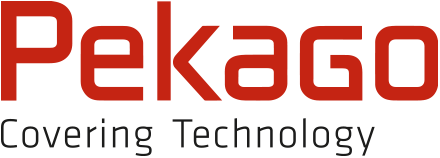3D printing or injection moulding of plastic: when do you chose which technique?
Although the technique has been around for some time, 3D-printing has grown in popularity in recent years. 3D-printing has a number of major advantages, including enormous design freedom and the ability to create a new shape without having to invest in expensive moulds.
3D-printing is an ideal technique that is increasingly compatible with various plastics and applications. The speed at which a new part can be made is unparalleled and the geometries that are possible cannot usually be reproduced with compact injection moulding.
When to use 3D-printing?
Pekago sees 3D-printing as the perfect solution when annual volumes are very low, when the products do not have to be very accurately made and when the product’s final geometry is still uncertain (think of prototyping and pilot versions of certain products). It should be noted that dimensional accuracy can be further improved by machining the 3D-printed product (think of drilling, milling and sanding). Of course, 3D-printing is also ideal if there is currently insufficient budget for (mould) investments.
Please note that when switching from 3D-printing to injection moulding, the properties of the product may change. For example, think of the strength and stiffness of a component and the geometries required, such as draft angles and connections.
And when to use plastic injection moulding?
Injection moulding is a tried and tested technique that has been used by many injection-moulding companies around the world for a very long time. It is ideal for very small to very large components in medium-to-high annual volumes. Injection-moulded components can be made with an enormous range of plastics, and very high accuracies can be achieved.
Injection-moulding components can be finished with a wide range of fine and coarse surface textures. In many cases crystal-clear and, if made with the right plastics, mechanically extremely robust.
It is said that injection moulding requires an investment in injection moulds that can only be used to manufacture one product type. But this is not entirely true, as multiple versions of a single product can often be made with the necessary modifications. And one can also still work with different colours and materials. Once an injection mould has been made, a very large number of injection-moulded components can then be manufactured one after the other and at high speed.
So when should you use 3D-printing and when should you use plastic injection moulding?
3D-printing is ideal for:
- low production volumes (of 1 to 100 per year)
- prototyping
- complicated designs that can be made with injection moulding
- uncertain annual volumes (investments can be deferred)
- products that are required quickly
Plastic injection moulding is ideal for:
- higher production volumes
- products with a low unit price (this is then cheaper than 3D-prining in the long term despite the mould investment)
- injection moulding parts with high dimensional accuracy
- injection moulding parts that must withstand mechanical stress and special conditions



